What is cPanel? Know more about cPanel, How to Use, Pricing & Plan, Features, Benefits, and In-depth Review of cPanel.
cPanel is one of the most well known online Linux-based graphical user interface (GUI) control panels for web hosting accounts and server management. It lets you cooperatively deal with all services like you can publish websites, manage domains, create email accounts, organize web files, and more. present, cPanel is the business standard and most web engineers all around are up to date.
Most of the web hosts use cPanel, so understand what cPanel is and how it works, then it will help you to obtain more from your web hosting. Here, you get to know more about what cPanel is, and then it will let you access important hosting features or else that would require some technical knowledge.
What is cPanel Hosting?
cPanel hosting is basically Linux web hosting (software that facilitates the management of a web hosting server) which includes the installation of cPanel. It allows you to easily manage your all hosting accounts.
cPanel has two interfaces, a user interface (UI) called cPanel and a server that executives interface called Web Host Manager (WHM). This blend permits clients to deal with their site and supplies hosting providers with all the tools to deal with the server.
Features of cPanel
- Storage Limits
- Bandwidth Allowance
- Email Hosting
- Control Panel Integration
- CMS Support
- Web Framework Support
- E-Commerce Integration
- File Management
- Database Support
- Security Tools
Why do you need cPanel?
You have experienced that cPanel is the primary control panel for shared hosting accounts. For example, Bluehost, SiteGround, and many more web hosts use the cPanel interface.
In short, cPanel will provide you the navigation, links, buttons, and illustrations all you needed to make hosting and file management more understandable.
Some of the areas you can manage through the cPanel include the following:
- Software installation, like installing WordPress.
- Email account creation and management.
- Website files organization.
- Domain and subdomain creation.
- Passwords and security.
- User management.
- Database search, backups, and management.
- And a lot more…
Without the assistance of cPanel, just those with specialized knowledge could deal with a server, or a site so far as that is concerned.
Generally, cPanel bridges the gap between complexity and user-friendliness. It’s still somewhat intimidating for many people just getting started with hosting. However, it’s one of the best solutions for dealing with your website files without recruiting a developer.
How to Login to cPanel
You can only get the cPanel if your web host uses it. Your host will provide a direct link from which you can sign up for a complete right to use.
If you are not able to find the link, then follow the given steps below:-
- Go to your browser.
- Type your website URL in the address bar.
- If your website starts with HTTP, then add 2082 to the end, for example, http://www.sitename.com:2082.
- If your website starts with https, then add 2083 to the end, for example, https://www.examplesite.com:2083.
Log in with username and password given by your host. Most of the hosts provide these credentials through a welcome email – you can also take help from your host’s support if you are not able to find them.
Pros of cPanel
- Easy to learn and operate
- Save your time and money
- Tried and tested by experts for beginners ease
- Plenty of tutorials and customer service available online
- Includes software auto-installers
Cons of cPanel
- Number of features can be awesome
- Easily change important settings by mistake
- Some of the hosts are running outdated software
- It will cost you more
- Not available with every web hosting
cPanel Pricing
Late last week, cPanel & WHM has announced a new licensing and pricing structure. This change was the consequence of several months of conversations to guarantee to understand as many use cases for cPanel & WHM hosting are possible. From so many users cPanel has got so many notifications from both web and on the phone, and the input has been clear. The analysis of use cases was incomplete, and they have thought little of the measure of help that a portion of our Community requires to implement these licensing model changes. It is missing on their part, and they are very sorry for any concern if they have caused any curse as a result.
There are four cPanel Account Tiers:-
- Solo
- Admin
- Pro
- Premier
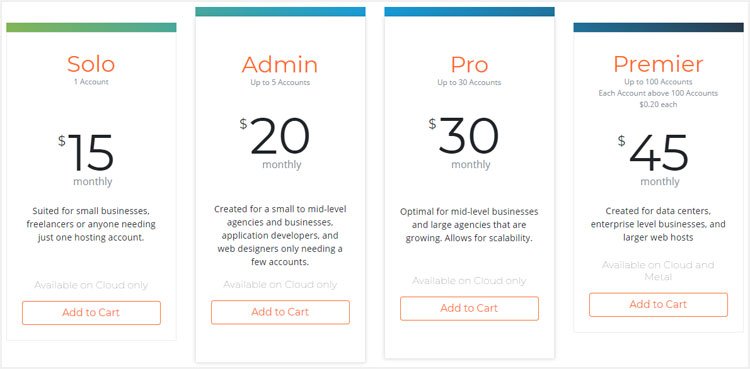
cPanel Pricing Breakdown 2020
| Name | Total Accounts | VPS | Cloud Dedicated | Dedicated |
|---|---|---|---|---|
| New Price | New Price | New Price | ||
| Admin | Up to 5 | $15 Default | N/A | N/A |
| Pro | Up to 30 | $20 Prepaid | N/A | N/A |
| Plus | Up to 50 | $25.00 | $25.00 Default | N/A |
| Premier Fixed 100 | Up to 100 | $35.00 | $35.00 | $35.00 |
| Premier Fixed 150 | Up to 150 | $40.00 | ||
| Premier Fixed 200 | Up to 200 | $45.00 | ||
| Premier Fixed 250 | Up to 250 | $50.00 | ||
| Premier Fixed 300 | Up to 300 | $55.00 | ||
| Premier Fixed 350 | Up to 350 | $60.00 | ||
| Premier Fixed 400 | Up to 400 | $70.00 | ||
| Premier Fixed 450 | Up to 450 | $80.00 | ||
| Premier Fixed 500 | Up to 500 | $90.00 | ||
| Premier Fixed 600 | Up to 600 | $100.00 | ||
| Premier Fixed 700 | Up to 700 | $110.00 | ||
| Premier Fixed 800 | Up to 800 | $120.00 | ||
| Premier Fixed 900 | Up to 900 | $130.00 | ||
| Premier Fixed 1000 | Up to 1000 | $140.00 | ||
| Premier Fixed 1050 | Up to 1050 | $200.00 |
How to Use cPanel?
Diverse cPanel installations include various features, but the good news is that it was quite simple to browse around and get to know about each of the segments. At the point when you first sign in, you will typically observe a few measurements that log your asset use (such as your CPU usage, your available storage space, and your memory usage). It will tell you a valuable method of keeping an eye on your site’s overall performance.
When you’ve acclimated yourself with your site’s presentation, it’s an ideal opportunity to investigate the various modules. We’ve given an overview of the most typical cPanel modules down below
File Modules
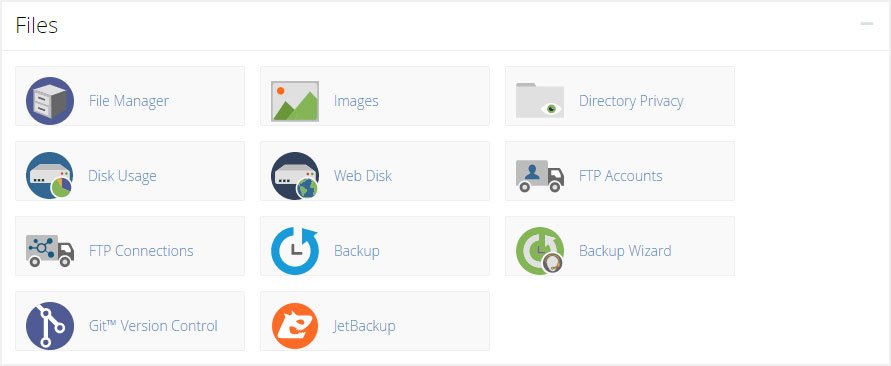
The above-given modules will allow you to directly upload and manage all the files from within the cPanel without needing to use an FTP customer. You can also specify privacy levels as per your choice; also make backups, and much more. Some of the common modules include:-
- File Manager
- Images
- Directory Privacy
- Disk Usage
- Web Disk
- FTP Accounts
- FTP Connections
- Backup
- Backup Wizard
- Git Version Control
- JetBackup
Preferences

It is the place where you can modify the layout of your cPanel installation to make it better that will get fit your requirements. Some common modules include
- Password & Security
- Change Language
- Change Style
- Contact Information
- User Manager
Databases

If your site uses a content management system (CMS) then it will use a database to store posts, settings, and other information. Some of the common modules include:-
- phpMyAdmin
- MySQL Databases
- MySQL Database Wizard
- Remote MySQL
Web Applications
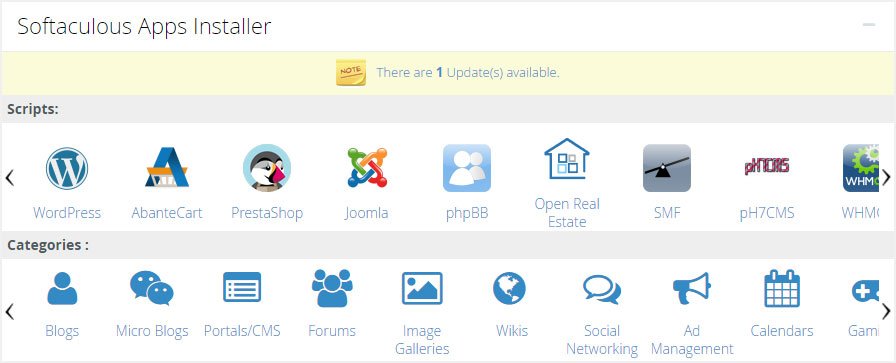
This is typically where your cPanel installation will allow you to install different types of software. Some common modules include:-
- WordPress
- Prestashop
- Joomla
- phpBB
Domains

It’s not uncommon for webmasters to use one hosting account for multiple sites or to set up subdomains and redirects. This is the section in which you can manage that. Common modules include:
- Site publisher
- Domains
- Addon Domains
- Subdomains
- Aliases
- Redirects
- Zone Editor
Metrics
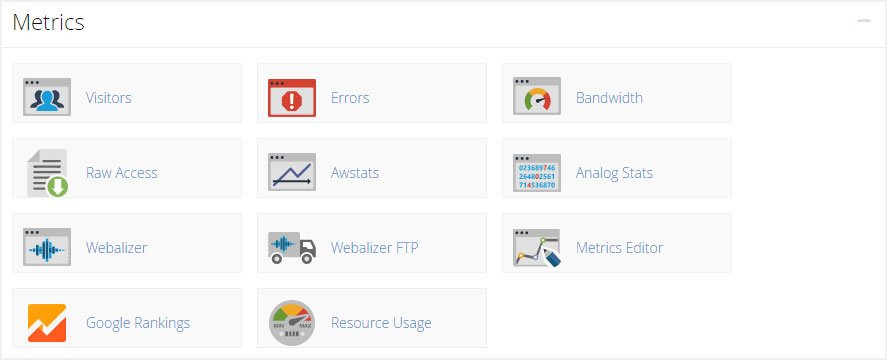
If you want to keep an eye on your website performance that you are running. That is where you can use the metrics modules. They all are about to give access to you for the powerful insights that can help you to make better make decisions and enhance the performance of your website work. Common modules include:-
- Visitors
- Errors
- Bandwidth
- Raw Access
- Awstats
- Analog Stats
- Webalizer
- Webalizer FTP
- Metrics Editor
- Google Rankings
- Resource Usage
Security

Security is a very big concern for most webmasters, especially if they are storing your delicate details such as your usernames, passwords, or financial information, and much more. All these given modules will help you to keep an eye on key security settings for your hosting account:-
- SSH Access
- IP Blocker
- SSL/TLS
- Manage API Tokens
- Hotlink Protection
- Leech Protection
- SSL/TLS Status
- Imunify360
Software
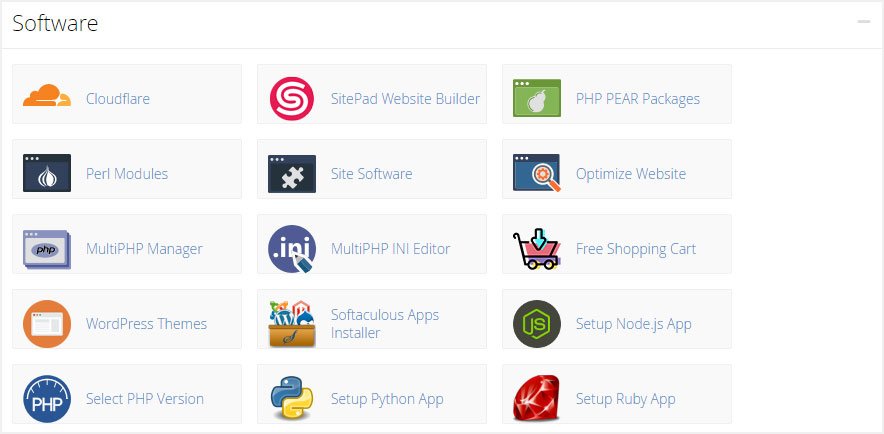
These all modules are largely about Perl and PHP and that is not much needed if you are a more advanced client:-
- Cloudflare
- Website Builder
- PHP PEAR Packages
- Perl Modules
- Site Software
- Optimize Website
- MultiPHP Manager
- MultiPHP INI Editor
- Free Shopping Cart
- Softaculpis Apps Installer
- WordPress Themes
- Setup Node.js App
- PHP Version Selector
- Setup Python App
- Setup Ruby App
Advanced

All these settings are also more useful for advanced clients. Some of the common modules include:-
- LiteSpeed Web Cache Manager
- Cron Jobs
- Track DNS
- Indexes
- Error Pages
- Apache Handlers
- MIME Types
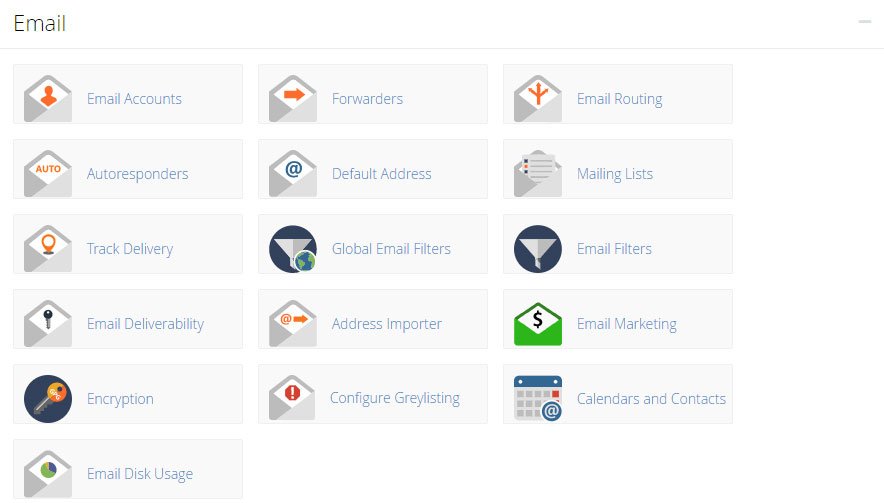
Not all web hosting plans include e-mail, but if you have a package that includes both email and cPanel then it is where you can manage all of those mail accounts. Given below some common modules include:-
- Email Accounts
- Forwarders
- Email Routing
- Autoresponders
- Default Address
- Mailing Lists
- Track Delivery
- Email Filters
- Global Email Filters
- Email Deliverability
- Address Importer
- Email Marketing
- Encryption
- Configure Greylisting
- Calendars and Contacts
- Email Disk Usage
SiteGround Black Friday Deals 2020: Up to 70% Discount Offer
cPanel Review
If you are going to buy a hosting service, firstly make sure that it includes cPanel. Despite the fact, it is a software that has not been updated for a while and it very important when it comes to managing a web server. It is easy to use and it will save your time and money both on various tasks you perform on your website.
It includes all the necessary tools that you have required to have full control of your web hosting. It also allows you to easily manage the database, as well as the files stored on disk. The biggest benefit is being able to manage server resources, such as disk space and bandwidth.


